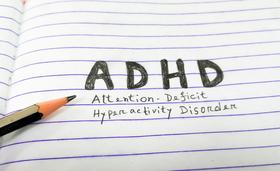Serving 46 students in grades Kindergarten-12, St Johns County Transition Program ranks in the bottom 50% of all schools in Florida for overall test scores (math proficiency is bottom 50%, and reading proficiency is bottom 50%).
The percentage of students achieving proficiency in math is ≤20% (which is lower than the Florida state average of 48%). The percentage of students achieving proficiency in reading/language arts is ≤20% (which is lower than the Florida state average of 52%).
The student:teacher ratio of 5:1 is lower than the Florida state level of 16:1.
Minority enrollment is 32% of the student body (majority Black), which is lower than the Florida state average of 64% (majority Hispanic).
Quick Stats (2024)
- School Type: Special education school
- Grades: Kindergarten-12
- Enrollment: 46 students
- Student:Teacher Ratio: 5:1
- Minority Enrollment: 32%
- Overall Testing Rank: Bottom 50% in FL
- Math Proficiency: ≤20% (Btm 50%)
- Reading Proficiency: ≤20% (Btm 50%)
- Source: National Center for Education Statistics (NCES), FL Dept. of Education
Top Rankings
St Johns County Transition Program ranks among the top 20% of public schools in Florida for:
Category
Attribute
Community Size
Student Attention
School Overview
St Johns County Transition Program's student population of 46 students has declined by 41% over five school years.
The teacher population of 10 teachers has stayed relatively flat over five school years.
School Type
Grades Offered
Grades Kindergarten-12
Total Students
46 students

Gender %

Total Classroom Teachers
10 teachers

Students by Grade

School Rankings
St Johns County Transition Program ranks within the bottom 50% of all 3,655 schools in Florida (based off of combined math and reading proficiency testing data).
The diversity score of St Johns County Transition Program is 0.47, which is less than the diversity score at state average of 0.70. The school's diversity has stayed relatively flat over five school years.
Overall Testing Rank
#3467 out of 3655 schools
(Bottom 50%)
(Bottom 50%)

Math Test Scores (% Proficient)
≤20%
48%

Reading/Language Arts Test Scores (% Proficient)
≤20%
52%

Student : Teacher Ratio
5:1
16:1

American Indian
n/a
n/a
Asian
n/a
3%

Hispanic
4%
36%

Black
26%
21%

White
68%
36%

Hawaiian
n/a
n/a
Two or more races
2%
4%

All Ethnic Groups



Participates in the National School Lunch Program (NSLP)
Yes
Eligible for Free Lunch
28%
50%

Eligible for Reduced Lunch
2%
4%

School Statewide Testing
School District Name
Source: National Center for Education Statistics (NCES), FL Dept. of Education
Frequently Asked Questions
What is St Johns County Transition Program's ranking?
St Johns County Transition Program is ranked #3467 out of 3,655 schools, which ranks it among the bottom 50% of public schools in Florida.
What percent of students have achieved state testing proficiency in math and reading?
≤20% of students have achieved math proficiency (compared to the 48% FL state average), while ≤20% of students have achieved reading proficiency (compared to the 52% FL state average).
How many students attend St Johns County Transition Program?
46 students attend St Johns County Transition Program.
What is the racial composition of the student body?
68% of St Johns County Transition Program students are White, 26% of students are Black, 4% of students are Hispanic, and 2% of students are Two or more races.
What is the student:teacher ratio of St Johns County Transition Program?
St Johns County Transition Program has a student ration of 5:1, which is lower than the Florida state average of 16:1.
What grades does St Johns County Transition Program offer ?
St Johns County Transition Program offers enrollment in grades Kindergarten-12
What school district is St Johns County Transition Program part of?
St Johns County Transition Program is part of St. Johns School District.
School Calendar
View the St Johns County Transition Program yearly calendar below. Note key dates such as:
Event
Date
Last Day for Students / Fourth Quarter Ends
May 24, 2024 (Friday)
Last Day for Teachers - Teacher Planning Day
May 28, 2024 (Tuesday)
School Reviews
Review St Johns County Transition Program. Reviews should be a few sentences in length. Please include any comments on:
- Quality of academic programs, teachers, and facilities
- Availability of music, art, sports and other extracurricular activities
Recent Articles

How “Collaborative Reasoning” Could Be the Next Public School Trend
Collaborative reasoning, which encourages independent critical thinking, is growing in popularity amongst public schools. Learn about collaborative reasoning and how it benefits public school classrooms.

Understanding ADHD in Children: Signs, Diagnosis, and Support Strategies
This comprehensive article explores the complex nature of attention-deficit/hyperactivity disorder (ADHD) in children, providing insights into its symptoms, diagnosis process, and effective support strategies. From recognizing early signs to navigating the diagnostic journey, parents will gain valuable knowledge to help their child thrive. Expert insights, real-life examples, and practical tips empower readers to create a supportive environment that meets the unique needs of children with ADHD.

March 04, 2024
Teaching in Contemporary TimesWe explore why individuals choose teaching, illuminating intrinsic motivations, the influence of role models, the pursuit of lifelong learning, and the aspiration to impact society.





